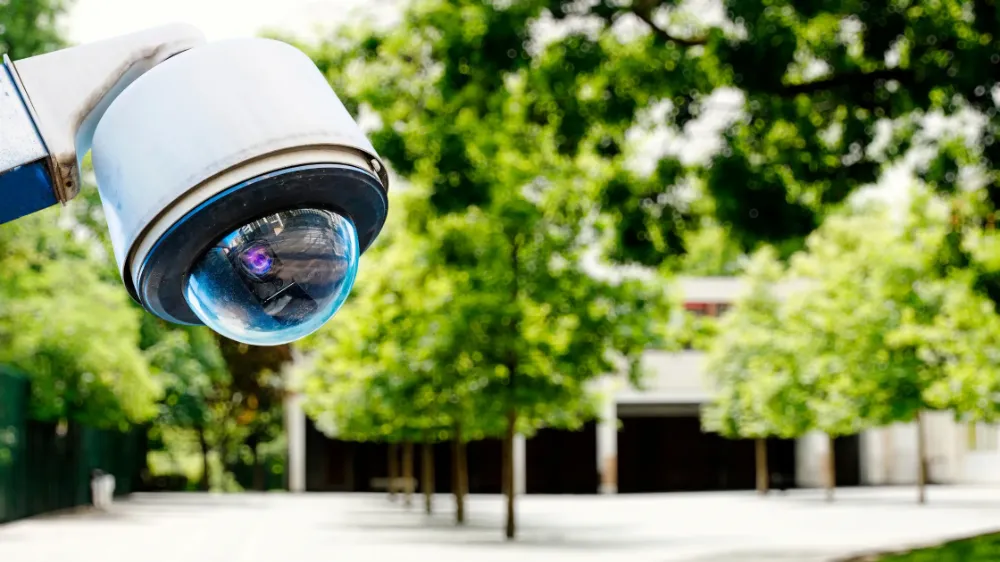Safety isn’t just a concern—it’s a growing demand. Schools worry about student safety. Hospitals fear unauthorized access. Government buildings face threats from both inside and outside.
Now imagine the aftermath of a school lockdown without working security cameras. Or a hospital where a patient’s room is entered without permission. What about a government office losing data to someone who walked in unnoticed? These things don’t just harm the physical environment. They break trust. Families, patients, and citizens begin to question the safety of places they once relied on.
When that trust is shaken, it takes a long time to rebuild.
Thankfully, security technology can restore peace of mind. From smart cameras to facial recognition, new systems work 24/7 to monitor, alert, and control what happens inside critical spaces.
Why Schools Need Smarter Security
Schools are meant to be safe places for growth and learning. However, many face issues like trespassing, bullying, and even violent threats. Traditional methods often fall short.
By integrating security technology, schools can respond faster to emergencies. For instance, access control systems allow only authorized people inside. Facial recognition alerts staff if a banned visitor tries to enter. Additionally, live video feeds let administrators monitor areas like hallways and parking lots in real time.
Moreover, these systems reduce the burden on teachers and staff. Instead of constant supervision, they can rely on automated alerts. When everyone knows help is always close, the atmosphere becomes calm and focused.
How Hospitals Use Security to Save More Than Lives
Hospitals aren’t just medical centers. They are also homes to newborns, aging patients, and sensitive data. Without proper systems, hospitals face risks like theft, privacy breaches, or even patient abductions.
That’s why hospitals are turning to security technology. For example, RFID bracelets track patients as they move between rooms. If someone tries to leave an area without permission, alarms sound. Additionally, visitor management systems log every entry, capturing IDs and taking quick photos.
More importantly, real-time video and two-way communication tools allow staff to handle issues quickly. A simple alert can stop a situation before it gets worse. In addition, these tools ease patient concerns. Families know their loved ones are cared for in a monitored space.
Securing Government Spaces: A Top Priority
Government offices deal with sensitive data, public services, and daily visits from citizens. These areas face unique challenges. Security must be strong without making people feel watched or trapped.
Security technology helps strike this balance. Biometric scanners allow workers to enter restricted zones without needing keys or badges. Meanwhile, AI-powered surveillance spots suspicious behavior and alerts staff in real time.
Also, smart sensors detect fire, break-ins, or even unusual noises at odd hours. Furthermore, the data from these tools helps teams plan better responses to future threats.
These systems are more than machines—they’re daily partners in safety.
Common Tools Making a Big Impact
Let’s look at a few systems now widely used across schools, hospitals, and government offices:
- Access Control: Card readers, keypads, and fingerprint scanners manage who gets in and out.
- Surveillance Cameras: Modern HD cameras provide real-time footage and store it safely for future use.
- Facial Recognition: Alerts teams when flagged individuals appear near entry points.
- Visitor Management Software: Digital check-ins replace paper logs, adding accountability.
- Panic Buttons: One push connects staff directly to emergency services.
- Environmental Sensors: Detect smoke, broken windows, or even chemical leaks.
Additionally, many of these tools are cloud-based. This means managers can access them remotely, anytime.
Human Impact of Safer Spaces
Technology does more than improve safety—it changes how people feel. In schools, students focus more when they know help is nearby. In hospitals, patients sleep better when entry doors are secure. Government workers perform better in spaces they trust.
Also, communities feel more connected to places that invest in safety. Citizens return, staff stay longer, and overall confidence grows. That’s the real value of integrating security technology—creating environments where people feel cared for and respected.
Common Challenges and How to Solve Them
Even great ideas have roadblocks. Some buildings fear high costs. Others worry about staff training. However, solutions are available.
For example, many providers offer budget-friendly bundles for schools. Cloud-based systems reduce the need for on-site hardware. Also, tech companies now offer training videos and 24/7 support to assist staff.
In addition, many tools integrate with existing systems. This means upgrades don’t require full replacements. Moreover, grants and public funding often support safety upgrades in public buildings. With planning and expert help, every space can make meaningful progress.
The Future of Public Safety
As risks change, tools must keep up. Thankfully, security technology is constantly evolving. New tools now use AI to detect threats before they happen. Some even monitor behavior patterns over time.
Also, the software now links video, alarms, access logs, and visitor records all in one place. This creates a powerful dashboard where nothing goes unnoticed.
While no system can promise complete safety, ongoing upgrades reduce risks and increase peace of mind. It’s not about fear—it’s about care.
Public buildings that use smart tools tell the world they value every person inside.
Conclusion
Safety isn’t a luxury. It’s a need. With thoughtful planning and the right systems, schools, hospitals, and government buildings can meet that need every day.
By using security technology wisely, these places build trust, reduce harm, and offer the calm every person deserves.
Want your building to feel safer without adding pressure to your staff? Our systems are easy to use and highly reliable in emergencies. Reach out to Ace Integrated Technologies today.

